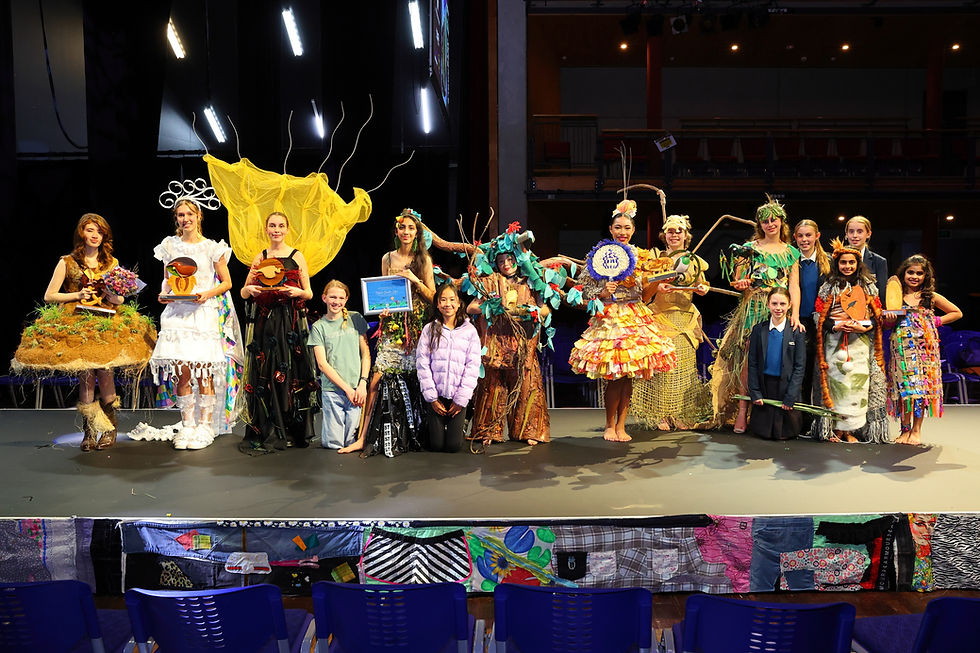Keeping it fresh in NZ’s streams…
- louisebeuvink08
- May 29, 2020
- 3 min read
Updated: Jun 4, 2020

Just like the plants and animals of NZ, native freshwater macroinvertebrates (tiny creatures without backbones, AKA bugs) have adapted to suit NZ’s unique environment.
Freshwater is referred to as the water that is evaporated from the oceans and then returned to the land as ice, snow or rain. Ice and snow melt from mountains, releasing freshwater to the streams, rivers, lakes and resupplying underground streams which flow back to the oceans.
Here is a fantastic graphic by Ministry for the Environment about our fresh water status.
Freshwater ecosystems make up a large part of NZ’s biodiversity. A wide variety of native plants and animals live in freshwater environments. Some of these plants and animals are highly specialised to the freshwater habitats they live in; meaning they have adapted specifically to survive there. Small changes to their environment can result in these creatures not being able to survive.
The amount of freshwater bugs found in a stream is often used as an indication of how healthy the stream is. In healthy streams, it’s possible to find more than 30 different types of macroinvertebrates in a small area. There can often be hundreds, if not thousands, of individuals found in just a small part of that stream.

Illustrations by Stephanie J. Bowman www.bowmansart.com (copied from Whitebait Connection website) Page 48.
Freshwater macroinvertebrates can be seen without a microscope and so the health of a stream can be determined by just looking for these creatures. Freshwater bugs have different levels of sensitivity:
The green classified creatures are highly sensitive, if they’re present in a stream environment then this is a good indication that the stream is healthy. A healthy stream means there are hardly any pollutants and there are good levels of oxygen and nutrients in the water. Macroinvertebrates such as stoneflies, mayflies, caddisflies and freshwater crayfish have adapted to live in this highly desirable environment.
The orange classified creatures are less sensitive but they’re still not completely tolerant of pollutants and muddy water. If bugs such as backswimmers, damselflies, dragonfly larvae and freshwater shrimp are present but the green classified creatures are not, this is a good indication that the stream may be slightly contaminated or polluted in some way.
The red classified creatures have low sensitivity. If creatures such as freshwater snails, leeches, midge larvae and worms are the only macroinvertebrates present, then this indicates that the stream is in poor health.

ADVENTURE TIME
Who's up for a bug hunt? Head out and about and seek your nearest stream (YES! we have many streams in Auckland). Check it out! What creatures can you see?
Notice that the highly sensitive (green) creatures have lots of limbs and wings so they can be highly mobile. Whereas, the red classified creatures have no wings or legs and are more worm-like… Can you move like a bug?
Play the game like Simon Says. Move like a mayfly, a backswimmer and a freshwater snail!
We want to ensure all our streams have a full bill of health, that they’re in the green and have plenty of different creatures living in them! Sadly a lot of the pollutants and harm to our streams is due to human impact. Changes to our land for building developments and chemical run off, from farms, pose a significant threat to NZ’s freshwater life.
There is hope though, there’s a number of initiatives in our communities today that are working to protect our streams, rivers and lakes. You can help!
Keep NZ’s streams clean and litter free; put your litter and rubbish in it’s place!
Ask your school about planting and restoring a stream in your community.
MBCT are working to inspire our tamariki to become Kaititaki of their living environment. Get in touch with us today to talk about how we can facilitate a project for your school!

Image of community members picking up rubbish from out of the water.

In 2016 we were the Winner for the New Zealand River Awards for our local Puhinui Stream being the most improved stream by the NZ Rivers Trust and the Morgan Foundation. This was a joint effort and collaboration by Auckland Council, Wai Care, Nestle, MBCT, local schools and organisations.
ACTIVITY TIME
Download the below image to make your very own Food Pyramid of a stream.
Colour it in, cut it out and fold the sides into a pyramid. Turn it into a fun game by rolling it and testing yourself what is on the covered side. You will be an expert in no time!!!

Content based on Whitebait Connection's lesson plan for Eye on Nature 2020 School Days.
Learn more about Whitebait Connection's work!




Comments